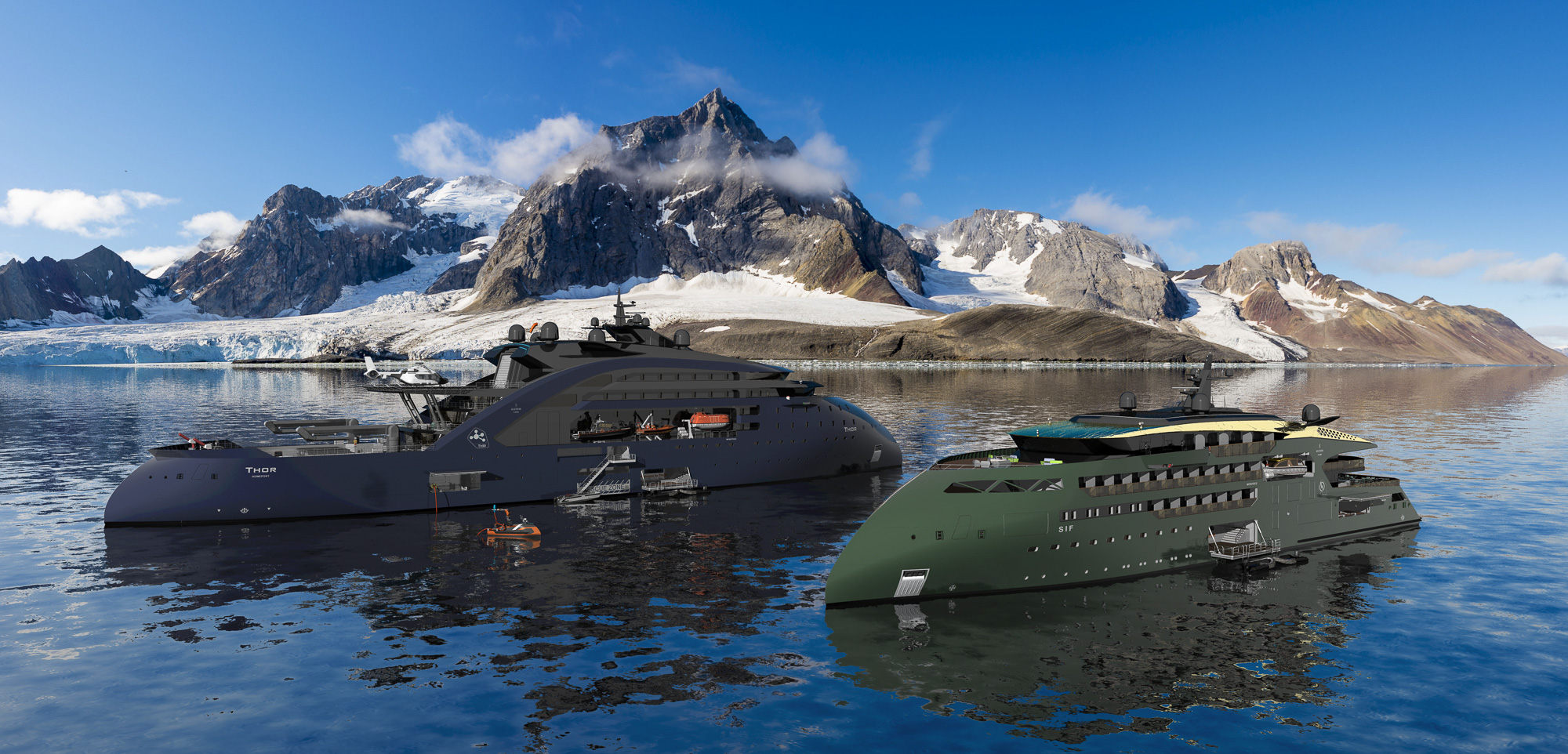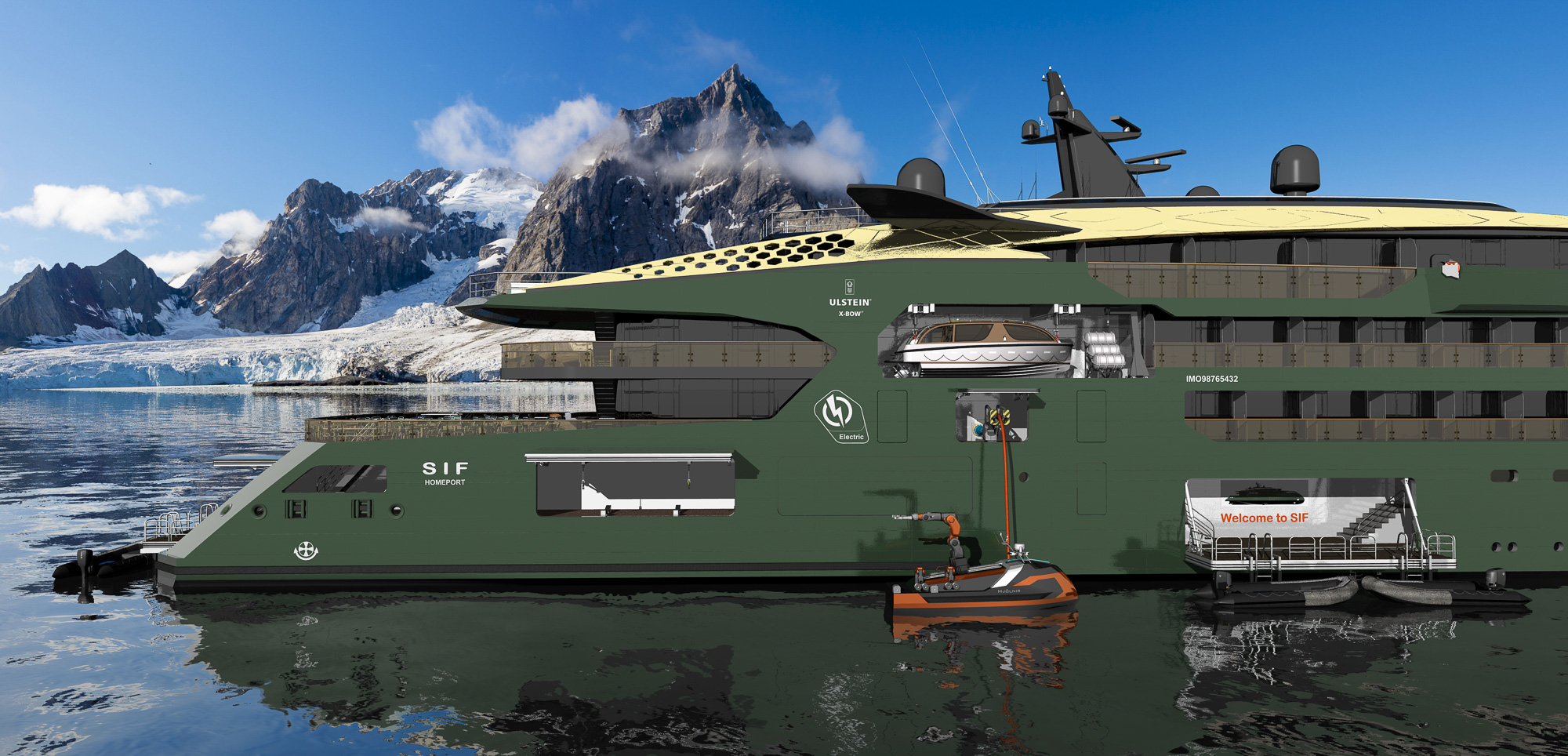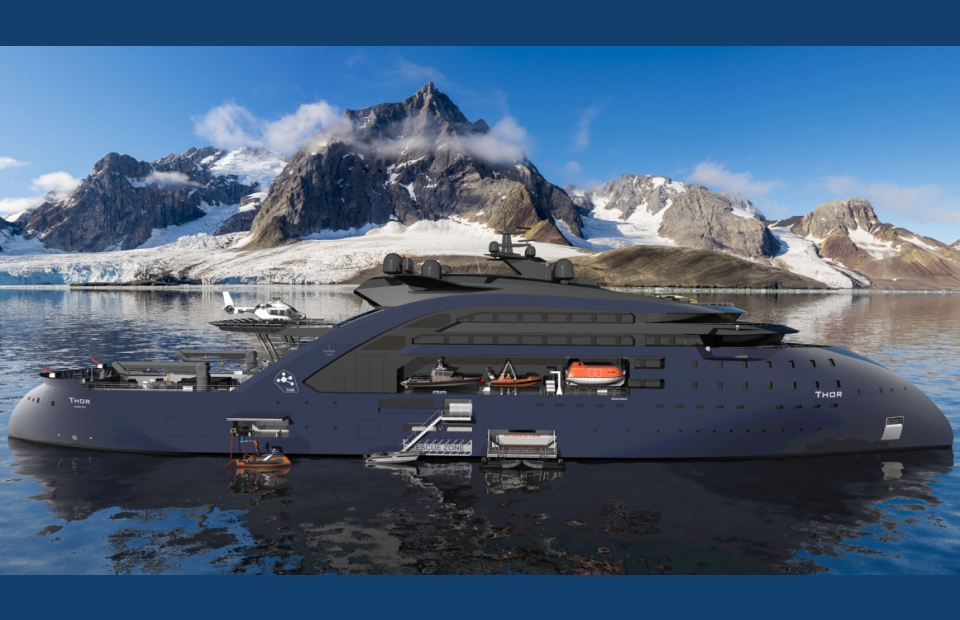Ulstein’s new vessel concept Thor could make zero-emission cruise operations a reality. The 149-metre 3R (Replenishment, Research and Rescue) design will feature a thorium molten salt reactor (MSR) to generate electricity. This enables the vessel to operate as a mobile power/charging station for battery-driven cruise ships.
Ulstein believes the Thor concept may be the missing piece of the zero emissions puzzle for a broad range of maritime and ocean industry applications. To demonstrate its feasibility, Ulstein has also developed the Ulstein Sif concept, a 100-metre-long, 160 POB capacity, zero-emission expedition cruise ship. This Ice Class 1C vessel will run on next generation batteries, utilising Thor to recharge while at sea.
‘We have the goals, ambition and environmental imperative to switch to zero-emission operations, but, until now, we haven’t had the solution,’ comments CEO Cathrine Kristiseter Marti, Ulstein. ‘We believe Thor might be the answer we’ve been looking for. Thor is essentially a floating, multi-purpose “power station” that will enable a new battery revolution.’
Also read: GLDD orders Jones Act compliant rock installation vessel of Ulstein design
Thorium molten salt reactors
Thorium has been identified as having huge potential for a maritime industry hunting for clean alternative fuels.
Molten salt reactors (MSRs) are safe, efficient and operationally proven solutions that work by dissolving Thorium – an abundant, naturally occurring metal with low radioactivity – in liquid salt. The ensuing chain reaction heats the salt, producing steam to drive a turbine and create electricity.
Although developments on land are well documented, its potential for delivering clean maritime power has yet to be incorporated into a vessel design. Ulstein has seen an opportunity to change that, potentially heralding a new dawn of clean power for cruise and maritime operations.
Also read: Ulstein designs research vessel for Korean institute
Thor’s charging capacity has been scaled to satisfy the power needs of four expedition cruise ships simultaneously. Thor itself would never need to refuel. As such, it is intended to provide a blueprint for entirely self-sufficient vessels of the future.
Speaking about the suitability of thorium MSRs as an energy source for maritime applications, Jan Emblemsvåg, Professor at Norwegian University of Science and Technology, an expert in the field of Thorium and nuclear power generation, notes: ‘MSRs have enormous potential for enabling clean shipping. There is so much uncertainty over future fuels, but here we have an abundant energy source that, with the right approach, can be safe, much more efficient, cheaper, with a smaller environmental footprint than any existing alternative.’
Change the industry
Marti: ‘Expedition cruise ships operate in increasingly remote, and environmentally fragile, areas. At the same time the industry faces growing pressure from diverse stakeholders to preserve nature as it is and ban the environmental impact of cruising. Thor enables replenishment of energy and supplies on site, while also boasting the technology to facilitate rescue operations, as well as conducting research tasks. It is, in effect, a crucial piece of infrastructure to support sustainable and safer operations. Thor literally has the power to change our entire industry.’
Thor and Sif
Both Thor and Sif feature Ulstein’s X-Bow design, created for greater operability, comfort, operational functionality and fuel efficiency.
Thor features helicopter pads, firefighting equipment, rescue booms, workboats, autonomous surface vehicles and airborne drones, cranes, laboratories, and a lecture lounge.
The expedition cruise vessel Sif can accommodate up to eighty passengers and eighty crew, offering silent, zero-emission expedition cruises to remote areas, including Arctic and Antarctic waters.
Picture (top): Thor ready to repower another vessel.










